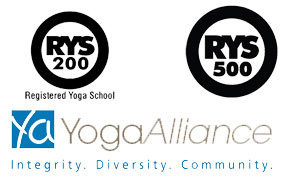Yoga Sutras of Patanjali
Though yoga is known since ancient ages in India, there were no scriptures or documentations of yoga until Patanjali. Patanjali yoga sutras were the first documented scriptures available about yoga. It covers almost all the aspects of life, including everything from your behavior to the enlightenment, the ultimate goal of yoga. Patanjali’s yoga sutras are considered the most authoritative texts available on yoga. Yoga is far beyond the confined concept of asanas and breathing techniques. In fact, it’s a way of living. The yoga sutras of Patanjali describe the eight levels of the involved in enlightenment or awakening through yoga. These eight levels are very commonly known as Ashtanga yoga. Yama, niyama, asana, pranayama, pratyahara, dharana, dhyana and samadhi are the eight levels of ashtanga yoga described by Patanjali in his yoga sutras. The yoga teacher training in Dharamsala offered by Yoga Faculty is well known for its exclusive course on Patanjali yoga sutras.
The first stage yama deals with the one’s behavior and attitude that defines the overall personality of a person. This level teaches us to be refrained from indulging in unethical deeds likes greed, stealing and lying. Non-violence and compassion towards all the living beings form the prime feature of this level. This level teaches the discipline, decency and dignity of life.
While yama focuses on our attitude towards society or the entire world for that matter, niyama the second level focuses on our attitude towards our own self. This level comprises of cleanliness, compromise, devotion, serenity and asceticism. This level serves as a means to purify your mind and body. This level teaches the art of contentment through the control of senses. It provokes the sense of inner exploration.
The asanas are a set of postures that are practiced in order to prepare one’s physical body for his spiritual journey. These asanas make your body strong and flexible. Aligning the body in particular postures combined with breathing techniques enables one to achieve greater awareness in his mind. These asanas help in reaching higher consciousness. They reduce the impact of external factors like climate or diet on the body.
Pranayam the fourth stage of involves with breathing techniques. Paranayam is also known as yogic breathing. The main goal of this level is to gain control over your breath. Prana is defined as the flow of air through the body and pranayama constitutes of three parts – inhalation, exhalation and holding the breath. Holding the breath happens unconsciously after every inhalation and exhalation for a very short interval of time. Pranayama deals with increasing this duration of hold of breath. It helps in improving concentration and balance of mind and body.
Withdrawal of the senses is defined as the Pratyahara, the fifth stage of Patanjali yoga. According to Patanjali, this stage is a bridge between the external aspects of yoga, which are the first four stages and the internal aspects of yoga which comprises of the next three stages. The consciousness of an individual is internalized in this stage. In other the brain of an individual becomes unresponsive to the sense of taste, smell, touch, sound and sight.The sixth level, Dharana is the ability to focus the concentration of your mind on a chosen object.The seventh level, Dhyana involves meditation. It is the ability to develop interaction with total focus with everything we seek to understand. The eight level Samadhi enables you to the reach the stage of self-realization which the ultimate goal of yoga.




